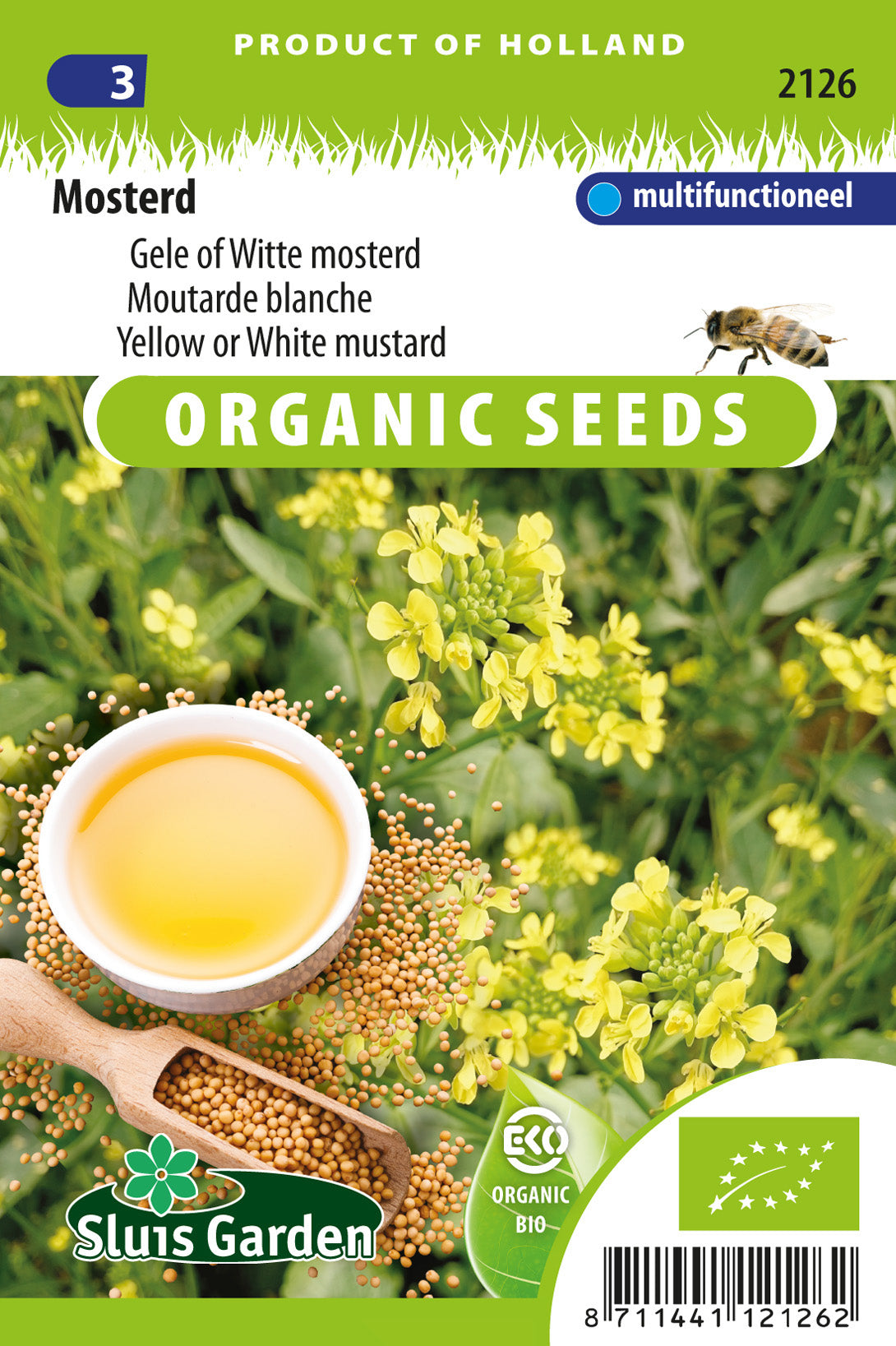1
/
of
1
Mustard yellow/white Sinai’s alba BIO by
Mustard yellow/white Sinai’s alba BIO by
Regular price
1.350 KWD
Regular price
Sale price
1.350 KWD
Unit price
/
per
Shipping calculated at checkout.
Couldn't load pickup availability
Growing Mustard (Sinapis alba) Yellow/White Sinai's Alba BIO organically involves following natural and sustainable practices without the use of synthetic chemicals. Here's a step-by-step guide to help you grow organic Mustard Yellow/White Sinai's Alba:
**1. Soil Preparation:**
- Choose well-draining soil enriched with organic matter. Mustard prefers fertile, loamy soil with a pH between 6.0 and 7.5.
**2. Planting:**
- **Timing:** Directly sow Mustard seeds in the garden in early spring or late summer. Mustard is cold-tolerant and can be grown as a fall crop.
- **Spacing:** Sow seeds about 1/4 to 1/2 inch deep and space them about 1 to 2 inches apart in rows spaced at least 12 inches apart.
**3. Sunlight:**
- Mustard prefers full sunlight but can tolerate partial shade. Plant it in a location where it receives at least 4-6 hours of direct sunlight daily.
**4. Watering:**
- Keep the soil consistently moist, especially during dry periods. Mustard plants prefer even moisture to prevent bitterness in the leaves.
**5. Mulching:**
- Apply organic mulch, such as straw or shredded leaves, around the base of Mustard plants to retain soil moisture and suppress weeds.
**6. Fertilization:**
- Mustard is not a heavy feeder. You can incorporate well-rotted compost into the soil before planting, and additional fertilization may not be necessary.
**7. Companion Planting:**
- Mustard is often used as a cover crop to suppress weeds and nematodes. It can also attract beneficial insects.
**8. Pest Control:**
- Mustard is generally resistant to pests. Monitor for aphids and caterpillars, and use organic solutions like insecticidal soap or neem oil if necessary.
**9. Disease Prevention:**
- Mustard is resistant to many diseases. Good garden hygiene and proper spacing can help prevent issues.
**10. Harvesting:**
- Harvest Mustard leaves when they are young and tender, typically before flowering. Cut the leaves with clean scissors or garden shears.
**11. Culinary Uses:**
- Mustard leaves can be used fresh in salads, sandwiches, or as a garnish. You can also cook them as you would other leafy greens.
**12. Succession Planting:**
- To ensure a continuous harvest, sow Mustard seeds every few weeks.
**13. Container Growing:**
- Mustard can be grown in containers. Choose a well-draining potting mix, and make sure the container has drainage holes.
**14. Organic Certification:**
- If you wish to officially label your Mustard Yellow/White Sinai's Alba as organic, follow the guidelines and requirements set by your local organic certification body.
Growing organic Mustard Yellow/White Sinai's Alba BIO involves creating a healthy and sustainable environment for your plants, promoting biodiversity, and avoiding synthetic inputs. Following these practices will contribute to the overall well-being of your garden and the quality of your Mustard harvest.
**1. Soil Preparation:**
- Choose well-draining soil enriched with organic matter. Mustard prefers fertile, loamy soil with a pH between 6.0 and 7.5.
**2. Planting:**
- **Timing:** Directly sow Mustard seeds in the garden in early spring or late summer. Mustard is cold-tolerant and can be grown as a fall crop.
- **Spacing:** Sow seeds about 1/4 to 1/2 inch deep and space them about 1 to 2 inches apart in rows spaced at least 12 inches apart.
**3. Sunlight:**
- Mustard prefers full sunlight but can tolerate partial shade. Plant it in a location where it receives at least 4-6 hours of direct sunlight daily.
**4. Watering:**
- Keep the soil consistently moist, especially during dry periods. Mustard plants prefer even moisture to prevent bitterness in the leaves.
**5. Mulching:**
- Apply organic mulch, such as straw or shredded leaves, around the base of Mustard plants to retain soil moisture and suppress weeds.
**6. Fertilization:**
- Mustard is not a heavy feeder. You can incorporate well-rotted compost into the soil before planting, and additional fertilization may not be necessary.
**7. Companion Planting:**
- Mustard is often used as a cover crop to suppress weeds and nematodes. It can also attract beneficial insects.
**8. Pest Control:**
- Mustard is generally resistant to pests. Monitor for aphids and caterpillars, and use organic solutions like insecticidal soap or neem oil if necessary.
**9. Disease Prevention:**
- Mustard is resistant to many diseases. Good garden hygiene and proper spacing can help prevent issues.
**10. Harvesting:**
- Harvest Mustard leaves when they are young and tender, typically before flowering. Cut the leaves with clean scissors or garden shears.
**11. Culinary Uses:**
- Mustard leaves can be used fresh in salads, sandwiches, or as a garnish. You can also cook them as you would other leafy greens.
**12. Succession Planting:**
- To ensure a continuous harvest, sow Mustard seeds every few weeks.
**13. Container Growing:**
- Mustard can be grown in containers. Choose a well-draining potting mix, and make sure the container has drainage holes.
**14. Organic Certification:**
- If you wish to officially label your Mustard Yellow/White Sinai's Alba as organic, follow the guidelines and requirements set by your local organic certification body.
Growing organic Mustard Yellow/White Sinai's Alba BIO involves creating a healthy and sustainable environment for your plants, promoting biodiversity, and avoiding synthetic inputs. Following these practices will contribute to the overall well-being of your garden and the quality of your Mustard harvest.
Share

